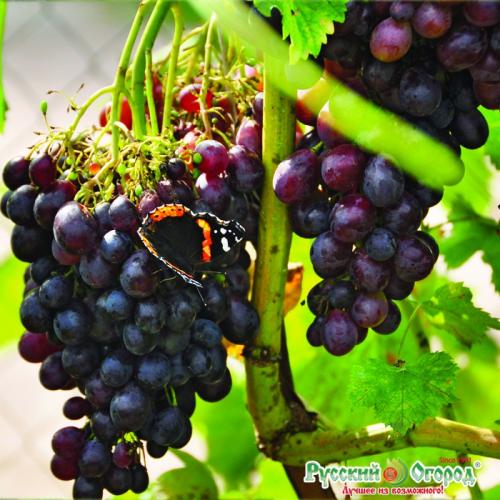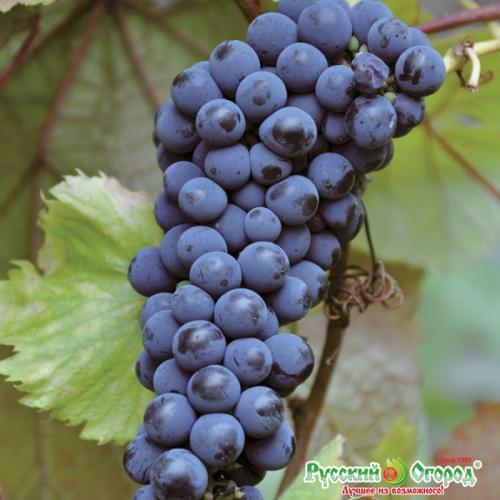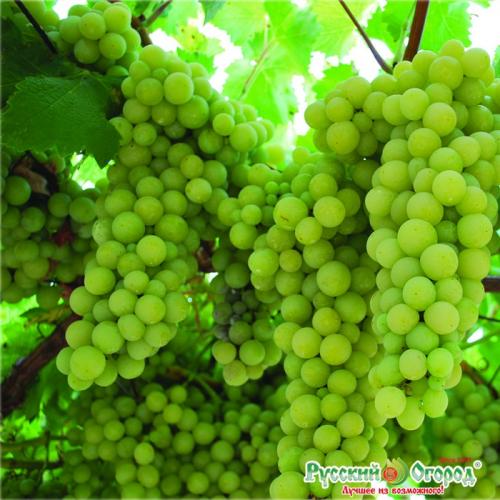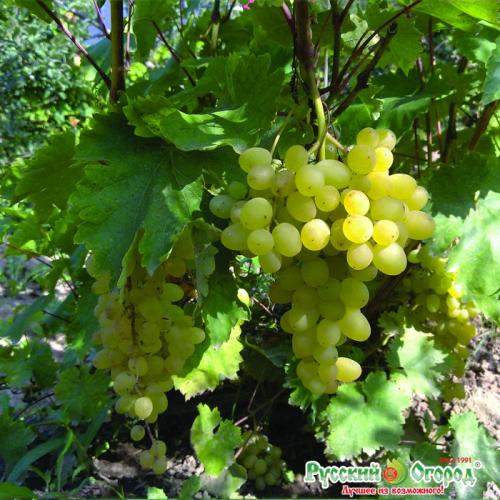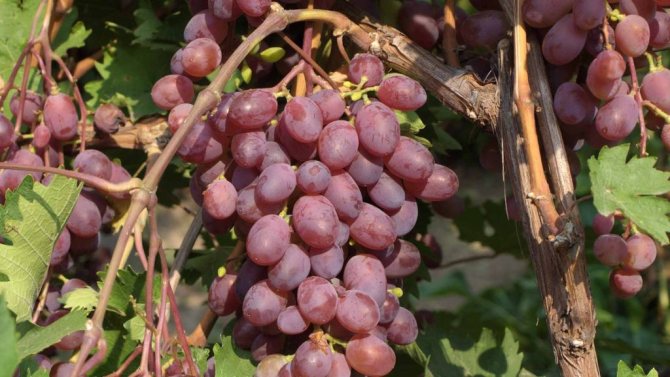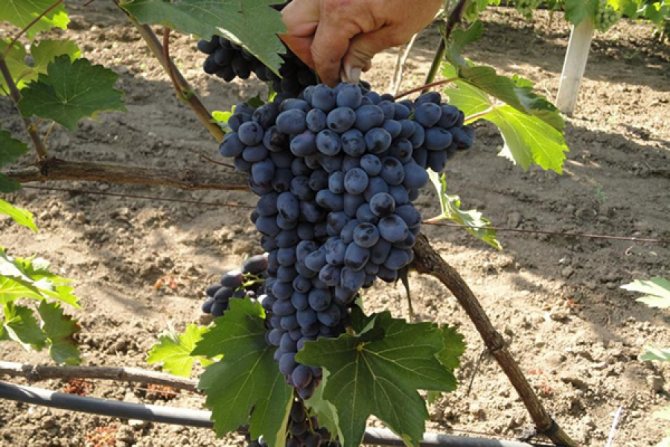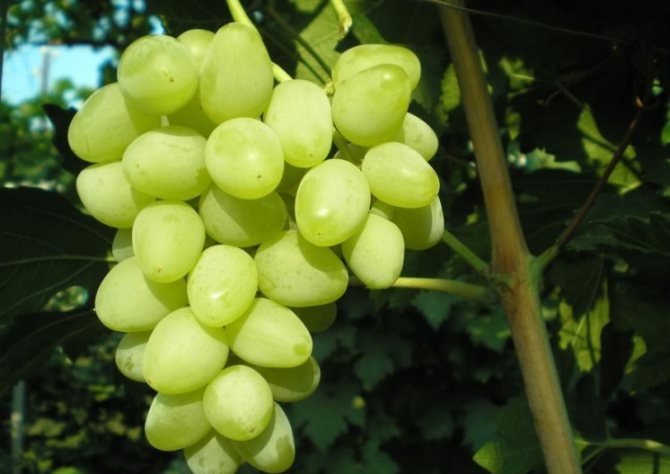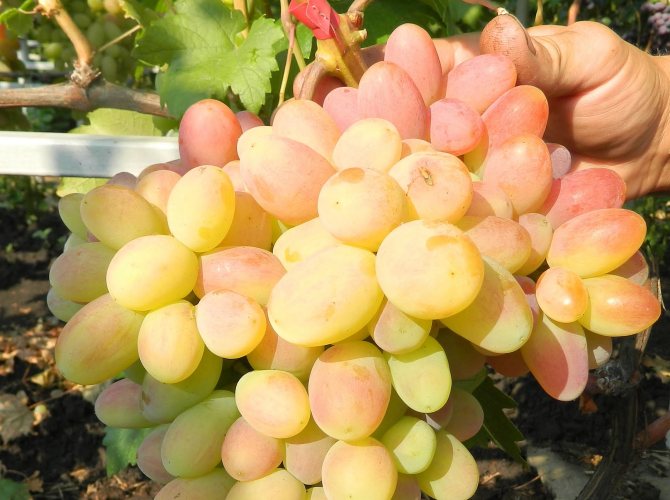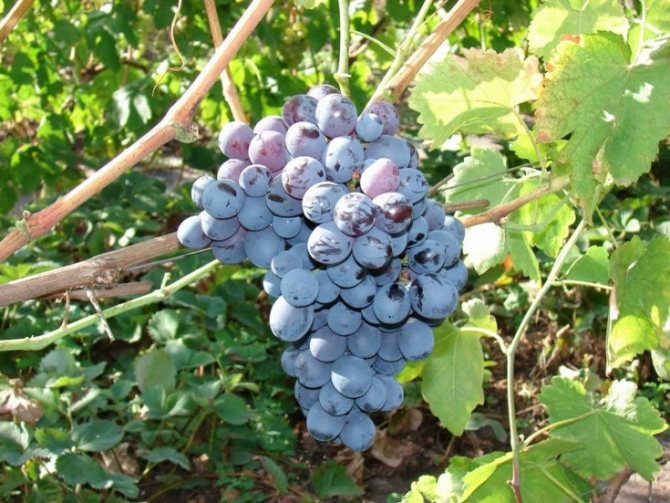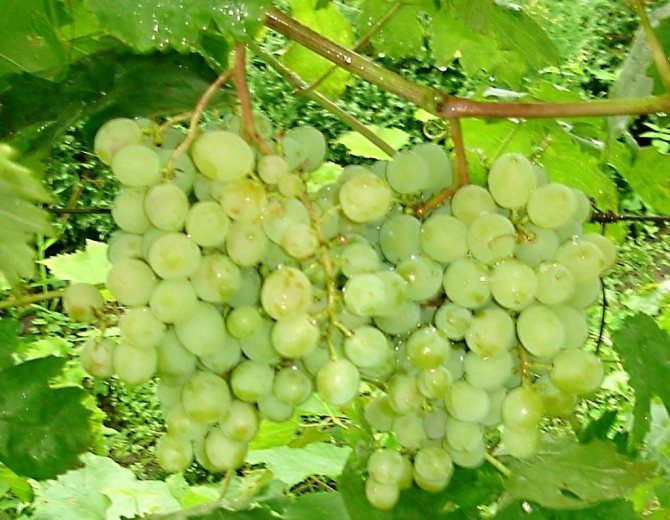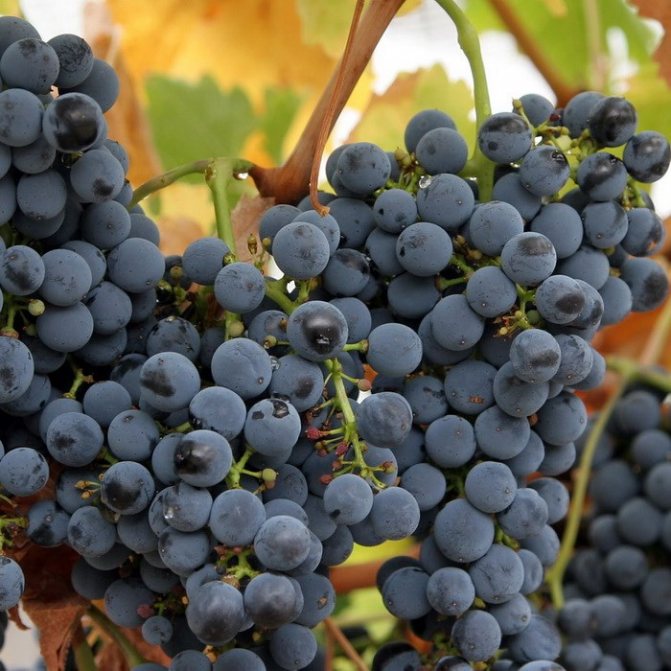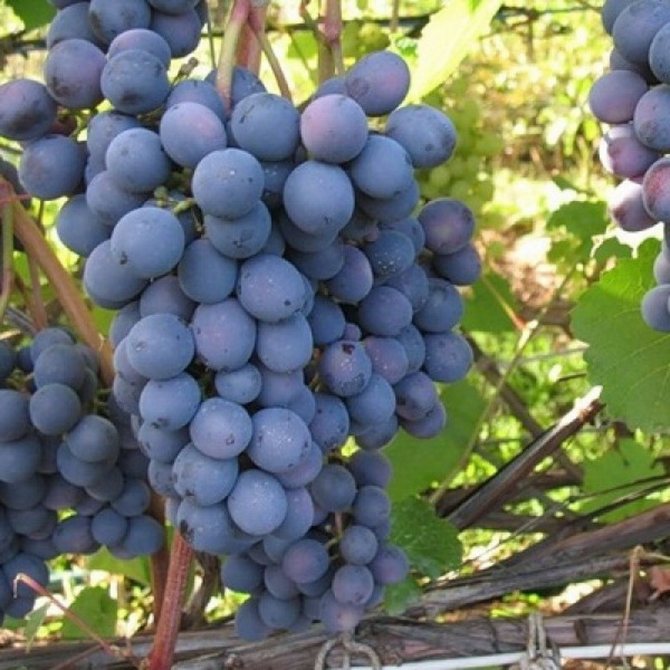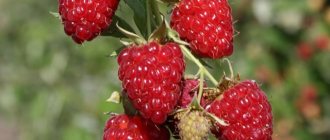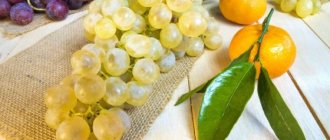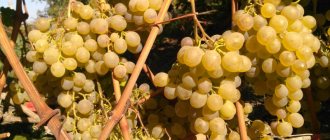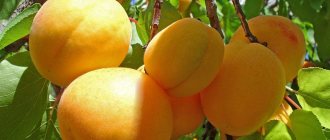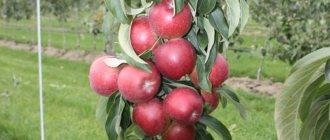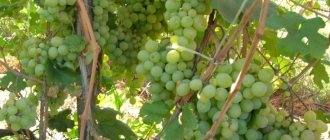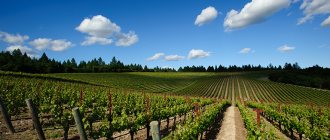Grapes are a crop that needs a lot of warmth and light. But plants of early varieties can be safely grown not only in central, but also in the northern strip of Russia. Moreover, in taste, their fruits are in no way inferior to their southern counterparts. The main thing is to find suitable early grape varieties.
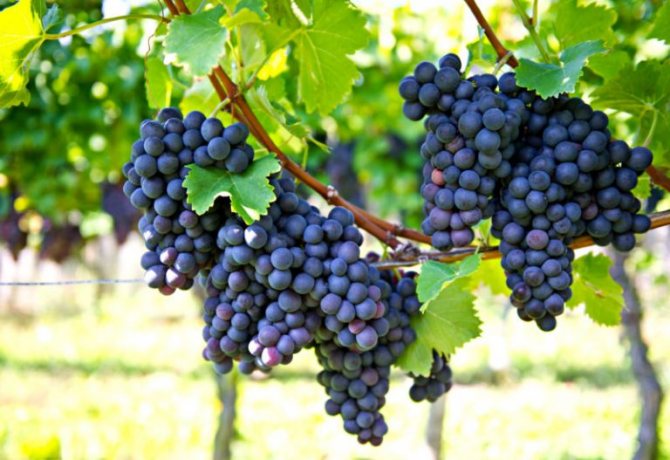
Grapes are a crop that needs a lot of warmth and light. Illustration for this article is used under a standard license <855
Early grape varieties for the middle lane. Grapes: TOP-7 varieties for the middle lane
| Kish-mish black Potapenko An early ripening table variety. The bunch is large and medium, conical, often with a "wing". The berries are roundish dark blue, weighing 1.5–2.0 g. The pulp is juicy. The yield is high. Rationing is carried out before flowering. Disease resistant, characterized by increased frost resistance. | |
| Russian Giant A vigorous variety of medium early ripening. The clusters are large, loose (on average 450–750 g), conical. The berries are large, claret-purple, round or drop-shaped, with a strong nutmeg aroma and high sugar accumulation. The pulp is fleshy and juicy, with a harmonious taste; when ripe, the berries do not crack. Frost resistance down to -25 ° C, high resistance to fungal diseases. |
|
| Moscow Bezukryvnaya A high-yielding variety of universal purpose, medium ripening period. Berries are blue-violet, weighing up to 5 g. Bunches are large cylindro-conical, weighing up to 400 g, medium density. The pulp has a very pleasant harmonious taste. High transportability. Withstands frosts down to -35 ° C. Possesses increased resistance to mildew, oidium, gray rot. It is characterized by a wide range of medicinal properties, is an excellent antioxidant, removes heavy metals and toxic substances from the body. |
| Raspberry Muscat An early fruitful variety for table use with increased resistance to disease and frost (up to -27 ° C). Bushes are weak. The bunches are large and very large (up to 700 g or more), conical, moderately dense, less often loose. The berries are large (up to 7.5 g), oval-ovoid, red-raspberry, fleshy and juicy, with a pleasant harmonious taste with a high sugar content (up to 19%). When fully ripe, a nutmeg flavor appears. |
|
| Octavian Table variety with high transportability and long shelf life. Resistant to disease and frost (up to -26 ° C). The bunches are rather large (20x13 cm), of moderate density, conical shape, with an average weight of 370 g. Berries are oval, large, whitish in color, weighing up to 5 g, with a dense pulp of pleasant taste. Ripen in mid-August. Bushes are powerful high-yielding. Quite unpretentious and highly growing variety. Can be used in gazebo culture; in areas with harsh winters, winter shelter is necessary. |
| Sugar Sherbet Seedless, vigorous variety of very early ripening period. The bunches are very large (up to 900 g, some - more than 1.5 kg), conical, moderately loose. The berries are 20x16 mm in size, round or oval, sometimes ovoid, white, in the sun - with a brown "tan", harmonious taste, with dense pulp and good sugar accumulation. Frost-resistant (up to 25 ° C), resistant to mildew, rot. |
|
| Platovsky Technical ultra-early grade (110-115 days). The clusters are cylindrical-conical, moderately dense, weighing 200 g.Berries weighing 2 g, round, white, in the sun - with a pink tint. The taste is harmonious. The pulp is juicy, the skin is thin but firm. Resistant to frost (up to -29 ° C) and fungal diseases. Mandatory removal of stepchildren, sterile and underdeveloped shoots is required. For faster accumulation of sugars, it is recommended to remove the leaves covering the bunches. Used for the preparation of table and dessert wines. |
Super extra
Table form of a very early ripening period. The bush is vigorous, the flowers are bisexual. The bunches are medium, the berries are large, white, egg-shaped, fleshy and juicy, with a harmonious taste. Resistance to fungal diseases at the level of 2.5 points.
| Sugar content of pulp (%) | Bunch weight (g) | Berry weight (g) | Ripening period | Trimming (eyes) |
| 10-12 | 500-700 | 6-9 | First decade of August | 5-7 |
Wine grapes for the middle lane.
Grapes are an ideal raw material for making homemade wine. However, not all varieties of this culture grow well in the middle lane and are suitable for processing.
Technical (wine) grape varieties are not as beautiful as table varieties. But on the other hand, they are less whimsical, and their berries are distinguished by a high sugar content (19-26%) and a high content of juice (75-88%), which makes them ideal raw materials for winemaking. Wine grapes are also used for the preparation of juices, compotes, soft drinks, etc.
Despite the fact that grapes are a thermophilic crop, good harvests of sweet berries can be harvested even in the middle lane. The main thing is to plant the "correct" varieties on the site, which will ripen by the end of September.
We offer 5 technical grape varieties that are well suited for growing in the middle lane.
Alpha
This variety is very popular among winegrowers, because it is high-yielding, is not afraid of pests and is not susceptible to fungal diseases. In addition, it perfectly tolerates frosts down to –22-24 ° С.
The berries are round, medium-sized, black or red-violet in color, covered with a specific waxy bloom.
The flesh of the berries is fleshy, dark green, with a large number of seeds (4-6), the taste is sweet and sour, with a slight strawberry tinge.
Crystal
Super early grape variety. Very productive, has increased frost resistance (up to 29 ° C below zero). Not susceptible to diseases, including gray rot.
What culture fears is drafts. Therefore, it is better to plant it along a high fence or near the southern wall of the house.
The average weight of the bunches is 170-200 g. The berries themselves are also not very large, oval, yellow-green or white with a slight waxy coating.
The pulp is very juicy, acid and sweetness are harmoniously combined in it.
Crystal grapes are ideal for making dry table wines.
Platovsky
The variety ripens very quickly (110-115 days after the start of the growing season) and has a high yield. Not afraid of frost (29 ° C below zero), has an average resistance to diseases and pests. Bunches of medium size.
Rounded white berries with a pinkish tinge are also not distinguished by their outstanding size, but they are very juicy and sweet, with a slight musky aftertaste.
The most delicious table and dessert wines are obtained from Platov grapes.
Odessa Muscat
Variety of early middle ripening period (the crop can be harvested 130-140 days after the beginning of the growing season). Disease resistant, tolerates severe frosts well. The yield is average.
The bunches are small. Berries of medium size, yellow-green amber color, with a thin firm skin.
The juicy pulp has a rich nutmeg aroma. That is why Odessa Muscat is ideal for making white table, dessert wines.
August
The variety attracts winegrowers with its high yield, resistance to frost and disease, as well as early maturity (ripe bunches can be removed already in late August - early September).
The clusters are small and loose. The berries are small, rounded, dark blue, sweet and sour in taste, with a slight musky aroma. Delicious table and dessert wines are obtained from this grape variety.
There are many other grape varieties that grow well in the middle lane and are used as raw materials for the preparation of a fragrant homemade drink. Having decided to plant one of them on your site, be sure to clarify the data on the timing of its maturation and resistance to major diseases.
Good harvests of grapes and aromatic homemade wine!
Aleshenkin
This type of grape is grown by many summer residents. It is loved for its pleasant sweet taste.
Medium-sized oval berries are green with an amber tint and are not prone to cracking. They have juicy fleshy flesh.
It is recommended to remove unviable shoots immediately, because the bush grows strongly and bears fruit abundantly. During the season, up to 10 kg of berries can be harvested from one bush.
At the beginning of the growing season, it needs to be treated against fungi. Frost resistance up to -25 ° С. It should be covered with a special material or dense mulch.
Frost-resistant grape varieties for the Moscow region. Covering and non-covering varieties
In viticulture there are no concepts of “covering and non-covering grape variety”, rather, it refers to one of the individual characteristics of any variety. For example, a vine grown in the Crimea or Krasnodar Territory as a non-sheltering crop in the Moscow region needs a mandatory shelter for the winter.
Only the practitioner - the grower determines which species (covering or non-covering) the cultivated variety belongs to. In the south of Russia, almost all varieties are grown without winter shelter, but closer to the middle lane, some of the grape varieties need to be warmed for the winter.
Although there are frost-resistant grape varieties that tolerate short or long-term frosts well. These varieties are very fertile even in the conditions of the Moscow region.
Non-covering grape varieties include varieties obtained by breeders as a result of crossing cultivated grape varieties with the American variety Librusek. They have good frost resistance, early ripening, resistance to the main diseases of this culture, and caring for them is simple and uncomplicated.
The following varieties are suitable for non-covering cultivation:
- Aleshenkin;
- Valiant;
- Nadezhda Aksayskaya;
- Victor;
- Shunya;
- Kuderka;
- Jupiter;
- Sovering Tiara;
- Alpha;
- First-Called.
You will surely be interested in familiarizing yourself with the 10 best uncovered grape varieties.


Novice winegrowers need to know: for young, immature vines, winter shelter is always necessary, the plant is accustomed to the cold in stages, year after year:
- the first year - the vine takes cover;
- second year - shelter is also required;
- the third year - the plant is partially covered, one sleeve is left uncovered for testing for frost resistance, in the spring (according to the surviving buds) the result will be clear.
In addition to growing grapes in a covering or non-covering culture, the cultivation of this thermophilic culture in greenhouses is practiced in the Moscow region.
For the vine, frosty winters are not as dangerous as alternating thaws and sub-zero temperatures. When the cold is stable, the plants can always be reliably covered, and at unstable temperatures there is a danger that well-covered vines will start to rot and become moldy under cover.


Grape varieties resistant to severe frost
Previously, it was believed that the cultivation of a heat-loving culture is possible only in the southern regions. Recently, it is also cultivated in the Urals and Siberia. For this, species are used, characterized by a short growing season and increased frost resistance.
Wine grapes suitable for severe frost conditions:
- Lydia;
- Crystal;
- Sharov's riddle;
- White Muscat;
- Fortune;
- Aleshenkin;
- Moscow sustainable;
- Taiga emerald;
- Triumph;
- Lando Noir.
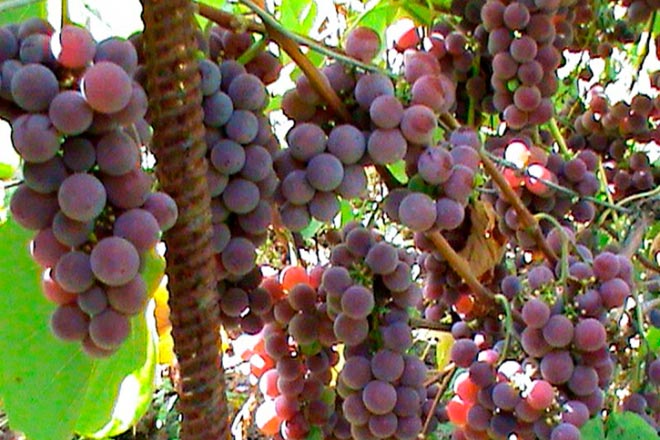

Lydia
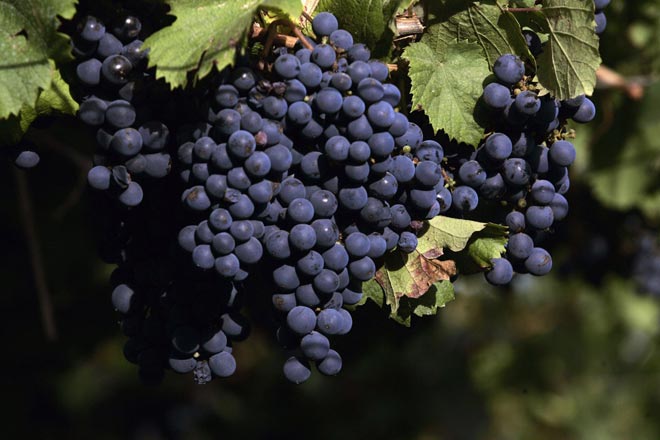

Fortune
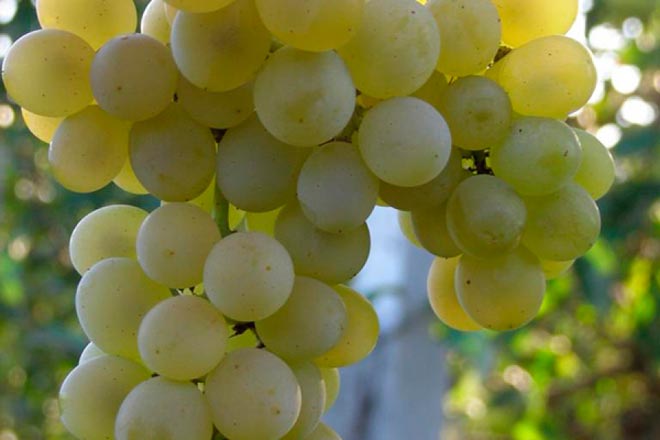

Crystal
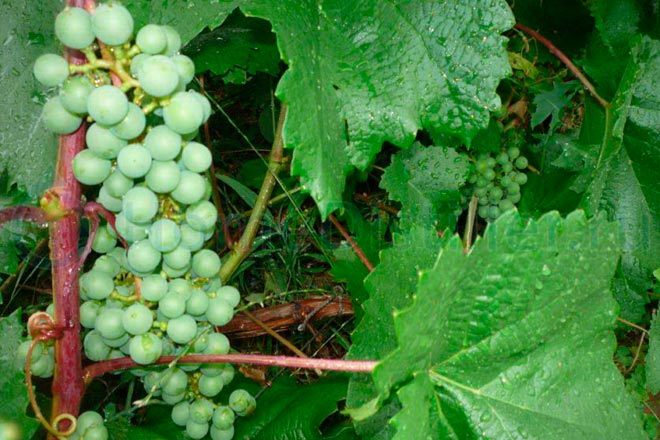

Taiga emerald
The best grape varieties for the Moscow region forum. Growing grapes in the Moscow region
Winegrowers Forum - Questions and Answers on Vineyard Growing
- Hello, I have a question and I dared to create a new topic on the forum about growing grapes in the Moscow region. I myself really love grapes, but I would like to try to grow it myself at my dacha in the suburbs. I read that hybrid and interspecific grape varieties were bred for our places, but I don’t know which one to choose. I think that successful cultivation will depend on the grape variety. Maybe someone has been or is engaged in cultivation in our area? Please share tips and tricks for growing.
For our places, varieties have also been bred.)) And quite a lot. In general, it is better to grow several varieties at once, three will be enough for a start. In addition, in order to choose a variety, it would be good to decide on what you want to grow it for. To eat or to make wine. If both, and then, these are at least two varieties. Well, with color, taste, too, it would be good to find out. In general, Druzhba, Timur, Laura, Super Extra, Charlie are good for the Moscow region - generalists. And about hybrids - I don't know, I won't say. It seems to me that this entertainment is already for experienced winegrowers.
You can plant grape seedlings both in autumn and in early and late spring. Seedlings with a closed root system, it is recommended to plant in April-May. And seedlings with an open root system can be planted from early spring to mid-autumn. In fact, there are several ways to plant grape seedlings. I practice the following: I dig holes of 50 centimeters. I fall asleep at the bottom, about 15-20 cm, pieces of broken brick or coarse gravel, then I fill the hole with prepared earth. My soil contains an equal amount of compost, sand, min. fertilizers and manure. From 4 sides of the hole, I insert plastic tubes 50-60 cm long (which are used for bathrooms). Approximately 5-10 cm should be on the surface of the ground in order to water the seedlings and introduce top dressing through the tubes. As for the varieties, I grow Saperavi Severny, Amurskiy, Sukribe.
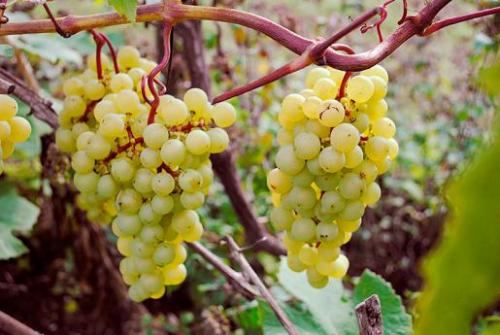

Kishmish varieties for the middle lane. Top 6 best varieties of raisins
Those who have not tasted raisins have not tasted grapes. Well, the grower who knows a lot about raisins will not miss the opportunity to plant at least one bush on his site. In our article, we want to introduce you to the six best varieties of raisins that would certainly not become superfluous on your site.
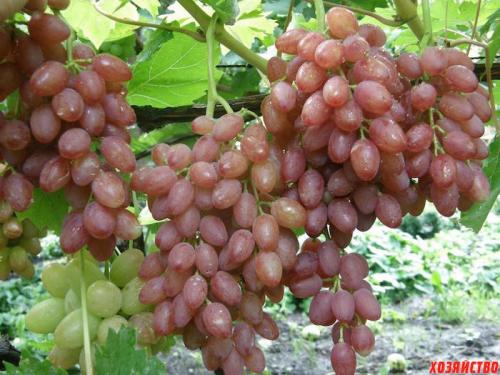

Radiant - the most popular raisins now. The only bad thing is that many winegrowers already have it, so it becomes difficult to sell it on the market. But for myself, this is an excellent variety, with a large berry, beautiful bunches and a red-pink color. The variety is poorly resistant to disease and requires reliable shelter for the winter. Due to the large bunches, Radiant is prone to crop overload, so it must be rationed. The variety is responsive to drip irrigation, watering should be stopped only 12-15 days before harvesting.
It is considered one of the best seedless varieties.
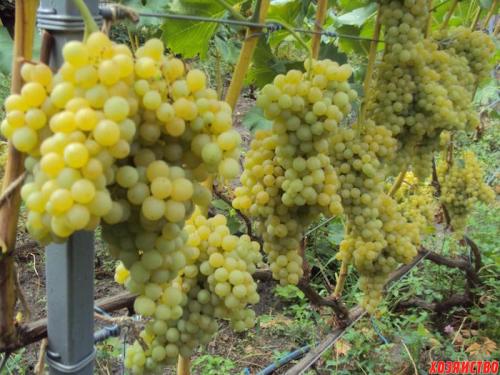

Kishmish 342 is one of the most popular kishmish. It is very common today, although it is more often called Hungarian raisins. This is a very early variety that ripens in 105-115 days. An easy-care variety with excellent taste and beautiful appearance.
The bunches are small, 400-600 g, the berries are small, 3-4 g. The pulp with a little nutmeg, the skin is thin, but dense, is not damaged by wasps.
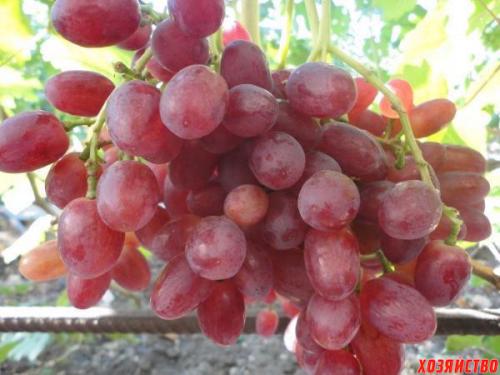

Veles - is gaining more and more popularity due to its very good appearance, nutmeg taste and ease of growing. It was bred by crossing the varieties Rusbol and Sofia by the breeder Zagorulko V.V. The ripening period is early - about 100 days. Maximum load up to 35 eyes per bush.The bunches often reach 2 kg, the berries weigh on average about 5 g. The skin is not felt when eating, the pulp with a bright nutmeg taste, sometimes soft bones are found, but they are practically not felt when eating.


Attica is a black-fruited raisin that should be planted by experienced winegrowers. It produces sweet but unpleasant seedless berries. Well suited for southern regions, but due to its higher frost resistance than Asian varieties, it can be successfully grown in the Middle Lane. The harvest ripens within 110 days after bud break. Bunches with good care can reach 2 kg and 30 cm in length. The berries are oblong, deep purple in color. The weight of each berry is 4-6 g. The berries have a sweet cherry flavor. Just don't rush to clean up. The berries first take on a ripe appearance, and only after a few days the pulp ripens.
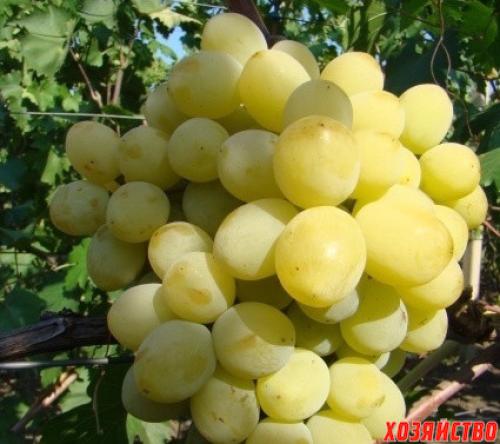

Aphrodite is a wonderful Bulgarian breeding raisin. It has a high class of seedlessness (I-II), very dense fleshy pulp, large berries for raisins (6-8 g), good taste. Sugar is not enough, I would say that the taste is somewhat bland, but you can eat a lot of this raisin - it doesn’t get boring. Now the second, stepchild's harvest is ripening. It will be ready in a couple of weeks or a little earlier. There are small claims for stability - we are forced to do one additional treatment for all "Bulgarians" (instead of the usual two, you have to do three) from mildew and oidium. The variety is manageable and you can be friends with it.
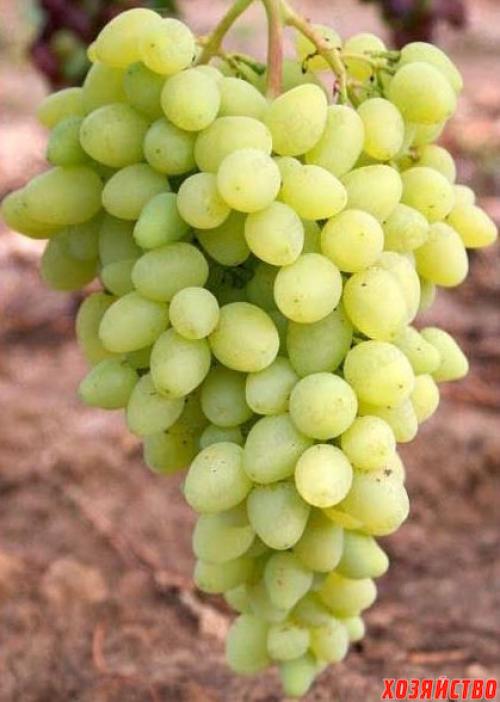

The long-awaited one refers to those cases when amateur selection gives a head start to professional. The variety is very early, and the name probably refers to the expectations of the selection results. The average weight of one berry is 7 g, but with good care it can reach 12 g!
However, the class of seedless variety IV. That is, in some years, dense seeds may appear. Another drawback is that if the rains are charged, the berries can crack and crumble from the bunch, which creates problems in some years. The rest of the variety is unpretentious.
Sphinx
Table form of a very early ripening period (100-105 days). The bush is vigorous, the flowers are bisexual. The bunches are large, the berries are oval, dark blue, crispy, of a harmonious taste.
Ripening of shoots and rooting of cuttings are good. Resistance to fungal diseases at the level of 2-2.5 points. Due to late blooming, flowers are not damaged by recurrent spring frosts.
| Sugar content of pulp (%) | Bunch weight (g) | Berry weight (g) | Ripening period | Trimming (eyes) |
| 12-15 | 700-900 | 6-9 | First half of August | 4-6 |


Planting early grapes is a great way to pick ripe bunches without waiting for autumn, and heartily enjoy the juiciness and sweet taste of magnificent, large berries.
The best grape varieties for the central black earth. The best wine grape varieties
The study of yield indicators in a given region will help to choose the most suitable variety. It is necessary to take into account the plant's needs for heat, sunlight, moisture, as well as resistance to diseases, pests, frost, and drought. There are good varieties that have acclimatized in the Urals and Siberia. At the same time, cultivation in the southern regions does not bring the expected yields.
A crop that ripens exclusively in the sun will not be able to ripen under conditions of short daylight hours, so the length of the growing season should be taken into account. Unripe berries cannot be used in winemaking. Both white and red wine can be made from the best grape varieties, subject to production technology. The need to add other components also depends on the composition of the fruit and growing conditions.
Not every option is suitable for making dessert wines. The drink should turn out to be richly colored, aromatic, thick, sweet, with low acidity.
To do this, take nutmeg varieties of white, pink or red. A sweet dessert product is made from raw materials with a carbohydrate content of 22-25%.
Popular grape varieties for white wine
The light drink is made from light berries or fruits with a clear, colorless juice. In the latter case, the color of the peel is not important, since the pulp is filtered out at the initial stages of fermentation and the dyes do not have time to get into the wort. There are many varieties, you can choose the most suitable one according to the requirements for the environment. Personal preference should be taken into account when choosing wine and grape variety.
For the production of a white variety of the drink, the following are used:
- Aligote;
- Riesling;
- Pinot Blanc;
- Chardonnay;
- Bianca;
- White Muscat;
- Traminer pink;
- Sauvignon Blanc;
- Verdello.
Aligote
For winemaking, the variety is cultivated in the Krasnodar Territory, Crimea, Kherson Region, Odessa, Georgia. The crop ripens quickly and is harvested in the second half of September. The bunches are powerful, the berries are small, they grow close to each other on a tassel. The color of the fruit is whitish or light green. In areas exposed to the sun, the skin becomes covered with brown or pinkish dots. The latter property indicates an increase in sugar content.
Aligote's yield is high when grown in moist and loose soil. Grapes are unpretentious to care.
The disadvantage of the variety is that there is no resistance to diseases, it is possible to be damaged by pests. Waterlogging with a lack of sunlight leads to rotting of the brushes.
Wine from Aligote is obtained with a golden hue of varying degrees of saturation. The intensity of the color depends on the strength of the drink. There is a slight bitterness in the taste and smell. A peculiarity is the characteristic sourness, you can feel the smell of fresh berries.
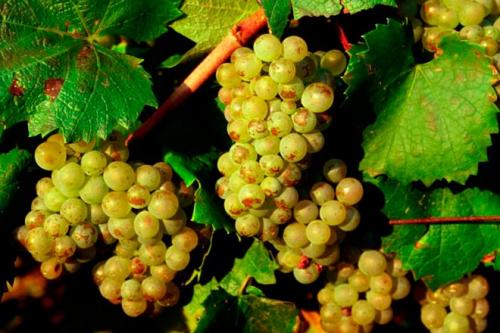

Chardonnay
The variety ripens in 130 days. The bunches are cylindrical, the yield is low. Berries with a thin skin, greenish-yellow, when ripe in the sun, acquire a golden hue. The sugar content of the pulp is 26%. Organoleptic characteristics of wine depend on the conditions of grape growing. When ripe in cold weather, the acidity is increased, the taste of a wet stone is expressed. In hot climates, alcohol from Chardonnay is obtained with an inexpressive taste.


Best grape varieties for red wine
For the production of the drink, it is recommended to use brushes that have matured with a sufficient number of sunny days. Berries are suitable for blue, purple, red varieties. During the fermentation of the pulp, active substances, coloring pigments pass into the wort, giving it a peculiar taste, astringency, saturation. When choosing a variety for a specific region, the characteristics of the selected crop should be taken into account when grown under specified conditions.
Suitable technical grape varieties for the Black Earth Region:
- Codryanka;
- Eurostandard;
- Kishmish of Zaporozhye;
- Delight is black;
- Dobrynya;
- Rondo.
When growing crops in more favorable conditions, you can use berries with a medium and late ripening period, for example, Pinot Noir, Saperavi, Cabernet Sauvignon, Lando Noir, Merlot, Sangiovese, Carmenere, Grenache. The taste of the drink obtained from them also depends on the place of cultivation and weather conditions.
Testimonials
Winegrowers in central Russia note that they are familiar with the description of a large number of grapes. In practice, not many of the best varieties pay off. In unstable conditions, they need to devote more time than in the southern regions. Despite the high frost resistance, all varieties are subject to shelter. If you do not cover, then in cases of even slight frosts, icing, the fruiting buds will freeze and there will be no harvest.
No matter how good a quality base a grape variety has, it needs constant care. If the simplest rules are not followed, it will not be possible to achieve a bountiful harvest.
Characteristics in the rating
| 1 | Cabernet Sauvignon | Best features |
| 2 | White Muscat | Juicy berries. Presentable appearance |
| 3 | Chardonnay | The best taste |
| 4 | Louise Swenson | High transportability. High-quality and generous harvest |
| 5 | Aligote | The best combination of sugar and acidity |
| 6 | Crystal | Unpretentious in care |
| 7 | Black magic | Excellent frost resistance |
| 8 | Rondo | High resistance to disease |
| 9 | August | Good keeping quality |
| 10 | Pinot noir | Abundant fruiting |
Who among us does not like the exquisite taste of wine? Rather, most people are wine drinkers. It takes a lot of work to create them. To begin with, you need to qualitatively grow raw materials for manufacturing. In order for the business to bring the desired results, you should choose the right grape varieties for a particular area. As you know, the middle zone of Russia is characterized by a cold climate with variable weather conditions. However, even in this area, you can get a rich and high-quality harvest.

